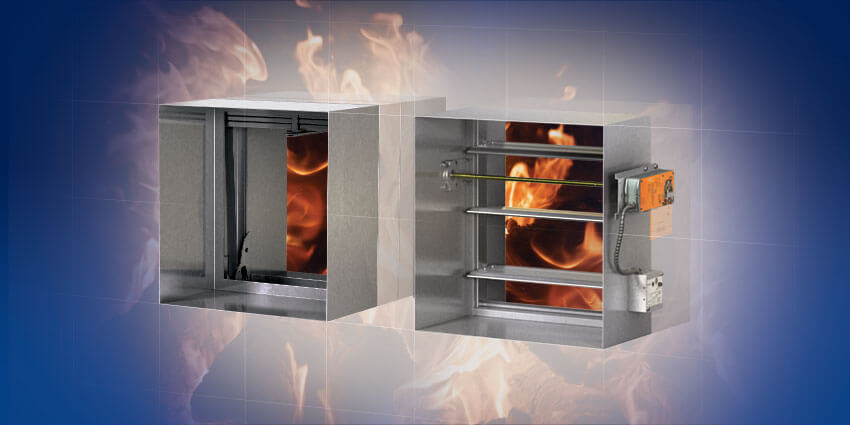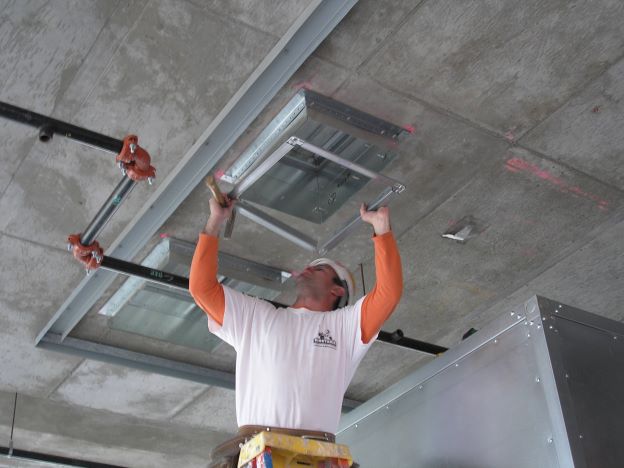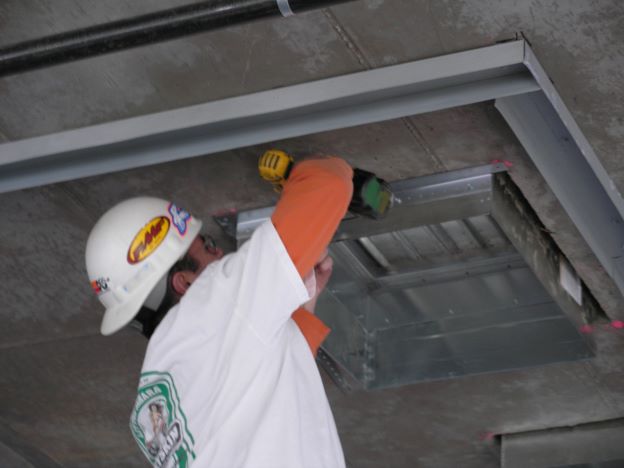
Dampers are an integral part of the passive fire protection system in a building. National Fire Protection Association (NFPA) standards mandate that each installed damper be tested periodically to verify operation. During installation, inspection, testing, and maintenance of dampers, several precautions related to paint and sealants should be noted.
Dirt and Foreign Materials
The damper assembly must be kept clean and protected from dirt, dust, and other foreign materials, prior to and after installation. Examples of such foreign materials include but are not limited to:
- Motor dust
- Drywall dust
- Firesafing materials
- Wall texture
- Paint overspray
Dampers should be sufficiently covered to prevent overspray if wall texturing or spray painting will be performed within five feet of the damper. Excessive dirt or foreign material deposits on the damper can cause excessive leakage and/or torque requirements to exceed design.
What to Look for When Inspecting and Maintaining Dampers
Dampers do not typically require maintenance if they are kept dry and clean. If cleaning is necessary, use mild detergents or solvents. If lubrication is desired for components such as axle bearings, jackshaft bearings, and jamb seals, do not use oil-based lubricants or any other lubricants that attract contaminants such as dust. Lubricate moving parts with a dry lubricant (such as T.F.E. dry lube).
During the periodic inspection of a non-actuated fire damper, code-prescribed periodic inspection and testing requirements should be followed. In particular, inspect to confirm the fusible link is not painted. If it is painted, remove and replace it immediately.
For all life safety dampers, the presence of foreign materials, excessive paint, and/or sealants should be noted during inspection and testing. If the operation of a damper is impeded by such materials, action should be taken to immediately repair or replace the damper.
Use of Sealants
UL leakage-rated life safety dampers require the sealing of the joint between the damper frame and ductwork or damper sleeve to maintain their UL 555S classification. Fire-rated dampers do not require sealant to maintain their UL 555 classification. However, sealant can be used to help prevent air leakage, if desired. Consult the damper manufacturer’s specific IOM (manual) for guidelines and procedures.
Breakaway joints used in conjunction with fire and combination fire/smoke dampers may also utilize duct sealants in accordance with Sheet Metal Contractors of North America (SMACNA) recommendations. Sealant requirements may vary between manufacturers, so again, consult the damper manufacturer’s IOM.
 |
| Breakaway connection damper installation |
Clearances Required Between Fire Damper Sleeve and Wall Openings
Fire dampers and sleeve assemblies expand during periods of intense heat. It is essential that openings in walls or floors be larger than the fire damper and sleeve assembly to allow for this expansion. In the event of a fire, the annular space (expansion gap) allows for fire damper expansion so that the damper will not bind and fail to function properly. Sealant, or any other foreign substance, that is introduced into the annular space must allow for compliance so the damper can still expand. If the sealant used will not allow for proper expansion, the clearance requirements will not be met. In almost all installations, it is advised to avoid applying any materials within the annular space.
There is an alternative fire/smoke damper installation that utilizes retaining clips in place of full-length retaining angles, and this specific installation allows for the use of firestop caulk and fill material in the annular space as detailed in the manufacturer’s IOM. It should be noted that most commercial installations cannot utilize this installation method and not all damper manufacturers have this approval.
 |
| Retaining angle installation |
In all cases, the use of sealant should be limited to the minimum amount of material required to completely seal the joint. The allowable sealants can vary based on what was UL tested and evaluated for use with that specific damper manufacturers’ products. It is important to note that just because a sealant is approved for use with one damper manufacturer, it does not mean it can be used on all dampers. Manufacturers must specifically test and approve their products for use with specific sealants, detailing specific installation instructions. The use of non-approved sealants may compromise the UL rating of the damper and should be avoided at all costs. If foreign material is to be introduced into the clearance area, the local Authority Having Jurisdiction (AHJ) should decide if the application will meet necessary requirements.
Dampers


from